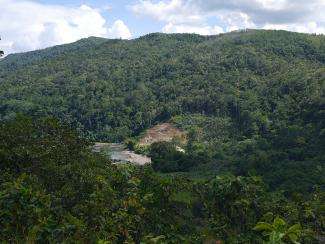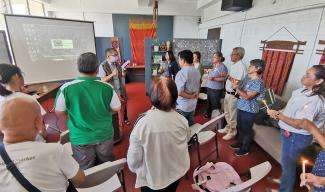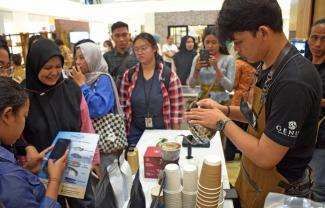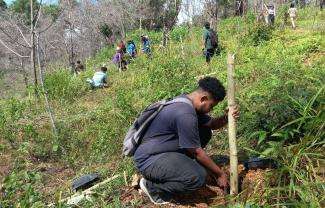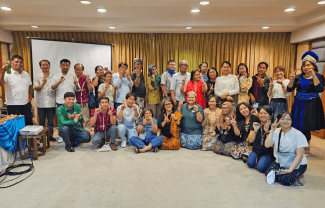By Yunus Yumte
The district of Tambrauw, with over six tribes and occupying 1.2 million ha on the northern coast of West Papua, is facing the question of how to balance development with conservation in the context of indigenous community rights. The national and provincial governments insist on development even as the legal status of indigenous community rights recognition remains unclear.
The mission of Tambrauw district is to promote conservation integrated with local rights and to recognize and protect the rights of indigenous communities. The strong customary claim of forests and land in the district has pointed out the importance of customary boundary mapping to clarify rights and build an agreement among communities about territorial boundaries and their vision for balancing development and conservation. Tambrauw government acknowledges the community as the main actor in development and puts community sovereignty and dignity as the goal of development.
This is the departure point for Tambrauw's process of customary boundary mapping. At its heart, customary boundary mapping brings communities together to discuss, debate, describe and draw maps by way of agreeing on boundaries. Proper customary boundary mapping should begin with awareness building in communities to determine the needs of communities. The mapping process includes three phases: a social phase in which agreements among communities are verified, a technical phase in which maps are made to meet all technical mapping requirements, and a recognition phase in which the rights of communities as drawn on the maps become legal.
Customary boundary mapping is an inherently lengthy and consultative process. But the development imperatives of the government and aspirations of communities cannot wait years, if not decades for such a lengthy process to be fully complete. The answer to the challenge of how to provide quick but valid information is indicative mapping. Even though the approach is simpler than the classic customary boundary mapping, it is key to develop timely as well as transparent, holistically integrated, accountable, and legally valid boundaries that are agreed upon by all of the communities. Also, indicative mapping makes basic data and information about tribes' boundaries and customary laws and traditions available for the next more detailed mapping based on needs up to the clan/family rights level.
In Tambrauw this approach has been chosen to respond to the current spatial plan development plans and customary right regulation that the government is pushing to be finalized by the end of this year. Not only the government but also the recently established customary community groups (LMA) in Tambrauw are in need of this basic information to more deeply understand tribes' distribution across the district.
Besides the plain or digital maps, that will be products from this mapping process, robust social information is included as well: (a) clans distribution, (b) land value, (c) identification of important places, (d) the relations between tribes and/or communities, (e) land and forest management approaches, and (f) customary community institutions.
Facilitators play a critical role as guide in the mapping process. Strong facilitators lead inclusive processes that produce collaboratively made maps. In Tambrauw, ten young facilitators have been trained in technical mapping skills and community facilitation techniques and selected to join the team. Eight of them are originally from Tambrauw and belong to tribes that are participating in the mapping process. By giving these young facilitators an opportunity to lead the process, they acquire additional skills and leadership capacity and engender trust among the communities they work with.
The customary community mapping process in Tambrauw is supported by WWF-Indonesia, Sausapor Office, The Samdhana Institute, AKA WUON, Paradisea Foundation and Epistema Institute.
